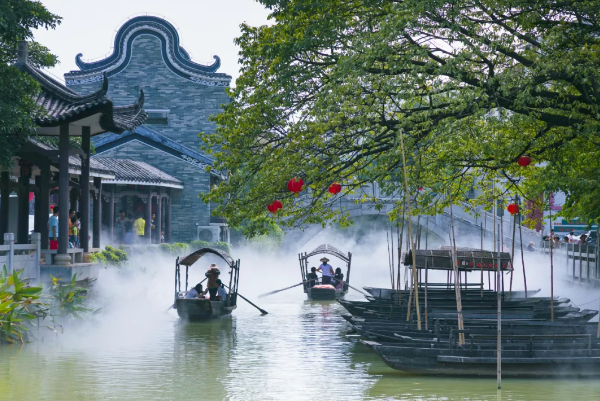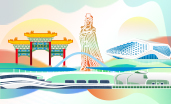Dongchong town: Historical hub of economic significance
Dongchong town, with a history spanning over 700 years, was once a vital production hub during the Song Dynasty (960-1279) and has now evolved into a renowned economic center in Nansha district.
In the early 20th century, Dongchong gained prominence for its dynamic spirit and unique geographical advantages, becoming a critical region for rice and sugarcane, known as the "land of fish and rice".

Dongchong town. [Photo/WeChat account: gz_nanshafabu]
In the wake of the implementation of reforms and opening-up policies, Dongchong has effectively attracted foreign investments, fostered private enterprises, and steadily bolstered its economic capabilities, transitioning into a modernized urban center.
Presently, Dongchong town functions as the hub of the Qingsheng Area, serving as a critical transportation nexus within the Guangdong-Hong Kong-Macao Greater Bay Area and playing a pivotal role on a national scale.
In intelligent manufacturing, Dongchong boasts significant capabilities, with 247 industrial enterprises above the designated size (main business revenue above 20 million yuan - $2.74 million), constituting a third of the total in the district.
Emphasizing cultural development, Dongchong hosts events like water town weddings and countryside concerts, ensuring residents enjoy a fulfilling life. With convenient transportation, abundant educational resources, and comprehensive healthcare facilities, Dongchong has become a desirable residential town.
Moreover, Dongchong town displays its historical depth and cultural essence through landmarks like Dongchong Fort, Butterfly Pavilion, and the newly opened Dongchong Impression Museum, reflecting its historical impressions.
The town also houses exhibition halls dedicated to agricultural and fishing cultures, showcasing ancient traditions and attracting numerous visitors eager to explore its rich heritage.
All rights reserved. Presented by China Daily









